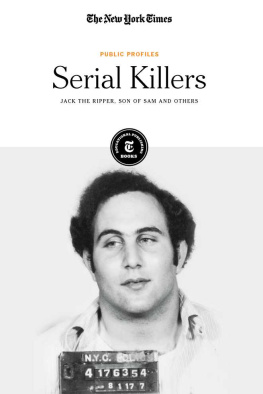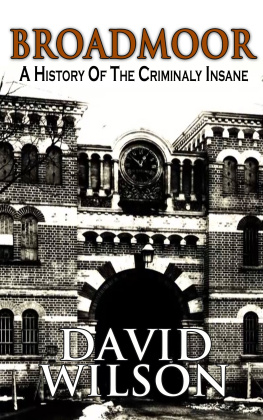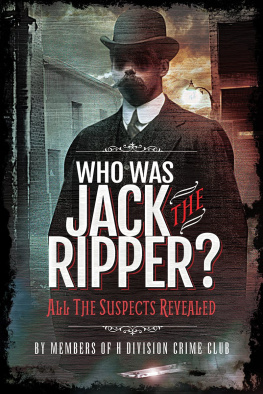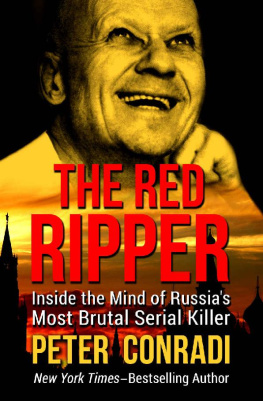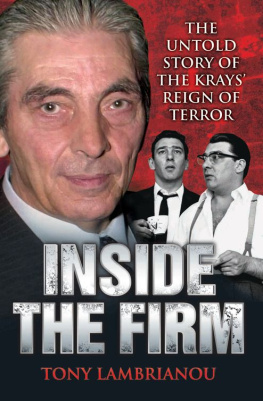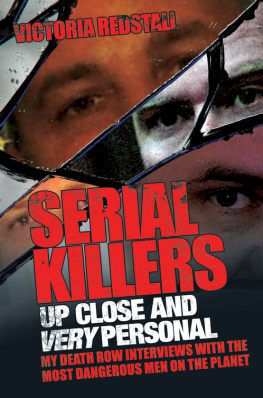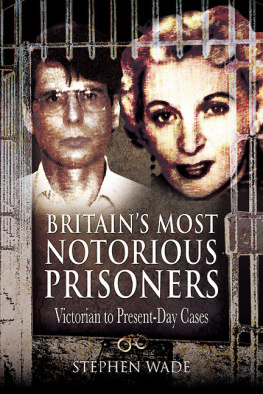Contents
Pagebreaks of the print version
INSIDE
BROADMOOR
Jonathan Levi is a successful television executive and BAFTA-nominated documentary film maker. Attracted to the extremes in society, he was the first person to ever gain full access to the patients and staff at Broadmoor for a highly-acclaimed primetime ITV series offering startling insights into the minds of some of Britains most notorious psychiatric patients.
When TV star and recording artist Tulisa was entrapped by the Sun on Sunday she turned to Jonathan to author and tell her story for BBC1 in the ratings hit Tulisa: The Price of Fame. Jonathan has made programmes with Andrew Lloyd Webber about his art collection and his musicals, and has hosted fundraisers with The Old Vic.
He was Factual Producer on ITV four-part drama, Hatton Garden, and co-authored a book on the same subject, Hatton Garden: The Inside Story.
Dr Emma French writes about how particular people, places and stories hit the headlines and capture the public imagination. Her books include Selling Shakespeare to Hollywood, and, as Co-Author with Jonathan Levi, Hatton Garden: The Inside Story. She lives in London with Jonathan and their three children.
INSIDE
BROADMOOR
Up close and personal
with Britains most
dangerous criminals
JONATHAN LEVI
& EMMA FRENCH

Published by Blink Publishing
The Plaza,
535 Kings Road,
Chelsea Harbour,
London, SW10 0SZ
www.blinkpublishing.co.uk
Paperback 978-1-788700-94-8
Ebook 978-1-788700-95-5
All rights reserved. No part of the publication may be reproduced, stored in a retrieval system, transmitted or circulated in any form or by any means, electronic, mechanical, photocopying, recording or otherwise, without prior permission in writing of the publisher.
A CIP catalogue of this book is available from the British Library.
Designed and set by seagulls.net
Copyright Jonathan Levi and Emma French, 2019
Jonathan Levi and Emma French have asserted their moral right to be identified as the authors of this Work in accordance with the Copyright, Designs and Patents Act 1988.
Every reasonable effort has been made to trace copyright holders of material reproduced in this book, but if any have been inadvertently overlooked the publishers would be glad to hear from them.
Blink Publishing is an imprint of Bonnier Books UK
www.bonnierbooks.co.uk
This book is dedicated to all victims and to their families. Writing this book has taught us the difficult truth that it is possible to be both a victim and a perpetrator.
Contents
All names of any current living patients have been changed for their privacy and protection and to safeguard victims families.
This book is entirely the views of the authors, based upon extensive research and not the official view or opinion of Broadmoor Hospital or its governing body West London NHS Trust.
T here would be plenty of time for questions later.
For now, the nurses and security were intent upon breaking the lethal nine-hour barricade inside the little corner of hell that resident murderer Robert Bob Maudsley had created. Bob and his companion, David Cheeseman, had sealed themselves inside with a third patient, David Francis, a known paedophile. He had apparently riled Bob and David Cheeseman by conducting a homosexual attack on one of their friends. Inside sources had reason to believe, though, that their preference if opportunity had presented was to go for a member of staff.
David Francis had been hog-tied with a record player flex and tortured throughout the interminable deadlock in the claustrophobic, airless unit. Burly and grizzled as the Broadmoor male nurses tended to be back then, they could not break inside Bob Maudsleys room. Eventually, put out of his agony with a makeshift garroting, he was then paraded in front of the cells spy hatch for the helpless Broadmoor staff to see.
When they finally gained access, the victim was partially skinned. This flaying had likely taken place while he was still alive, as his screams echoing through Broadmoor during his ordeal had testified. One of the first nurses on the scene described to us sperm coming out of every orifice of the victim; the nurse is still traumatised by the experience, decades later. According to another staff source quoted in the press, David Francis was discovered with his head cracked open like a boiled egg, a spoon hanging out of it and his brain partially absent.
More than 40 years on, this 1977 incident remains perhaps the most notorious crime to take place within Broadmoors walls and there is certainly plenty of competition for that dubious honour. As one staff member put it, they moved intensive care from Monmouth to Norfolk [wards]. Both patients are still alive, but not at Broadmoor. They went to court and got prison terms. They should have been returned to Broadmoor. But the incident changed practice. Understandably, staff past and present still pore over every detail.
How it happened. Why it happened. Whether it could ever happen again.
The public perceive this place as just being rapists, murderers and paedophiles. But some of us are in for self-harm, burglary and then we got ill in prison. We get tarred with the same brush, and the public think we are all monsters. And its not fair.
Broadmoor patient
B roadmoor. Few place names in the world have such profound and chilling resonance. For over 150 years, it has contained the UKs most violent, dangerous and criminally insane mental patients, including paedophiles, killers and cannibals. In 2019, it is also where just under 200 highly vulnerable men call home.
Perched on a hill above the picturesque village of Crowthorne, Broadmoor looms large, both in its Victorian Gothic architecture and in the publics imagination. When most people think of Broadmoor, they think of its more infamous inmates: Ronnie Kray, Charles Bronson, Peter Sutcliffe, Kenneth Erskine. Legends for all the wrong reasons. Many of these patients were inmates during the 1980s, Thatchers Britain, when Broadmoor was at its most notorious, and the hospital was always in the tabloid press.
But Broadmoor is changing, evolving, as it has always done over the years. Soon, the hospital will move to a new set of buildings. Whether or not it retains its reputation as the most dangerous secure facility remains to be seen, but during our time spent interviewing inmates and staff, we soon came to see that the patients arent two-dimensional villains, or legends crying out to be emulated. No, the truth about Broadmoor is far more complex and interesting than that.
Broadmoor is a sprawling campus, with numerous buildings spread over a large area and surprisingly beautiful gardens with a stunning view of the surrounding countryside not that youd choose to stay there. As one patient we met said, Its a great view, but it never changes.
The main car park to Broadmoor is always full, so we tend to park in the overflow car park, near the site where the new hospital is going to be. An A4 sheet of paper needs to be filled out with NHS VISITOR and the registration plate clearly written down and displayed on the dashboard. We have never seen a parking attendant in all of our many visits, but each time we have conscientiously filled out this form. Huge construction machines squat stolidly nearby and site tarpaulins flap in the wind. It very often rains in this exposed part of Berkshire. There are many trees, mainly miserable, spindly specimens. The walk from the visitors overflow car park flows through a path and into some woods. It feels like a walk into an activity centre but there are no bike riders, no children in pushchairs or on scooters. Once youre heard the escape stories, it is hard not to shiver with fear here.




